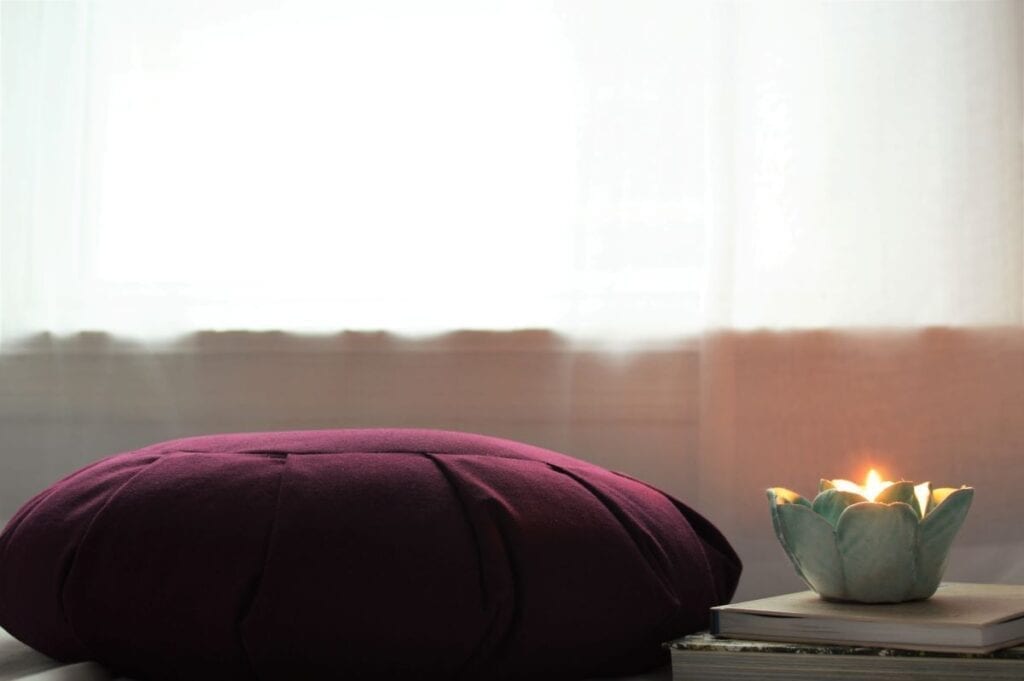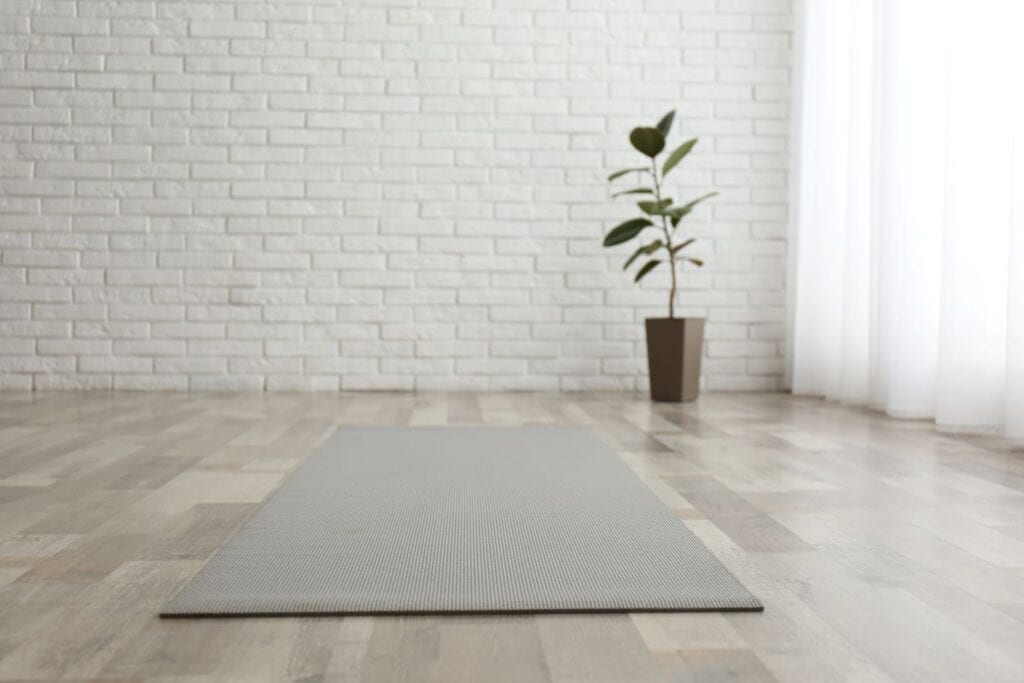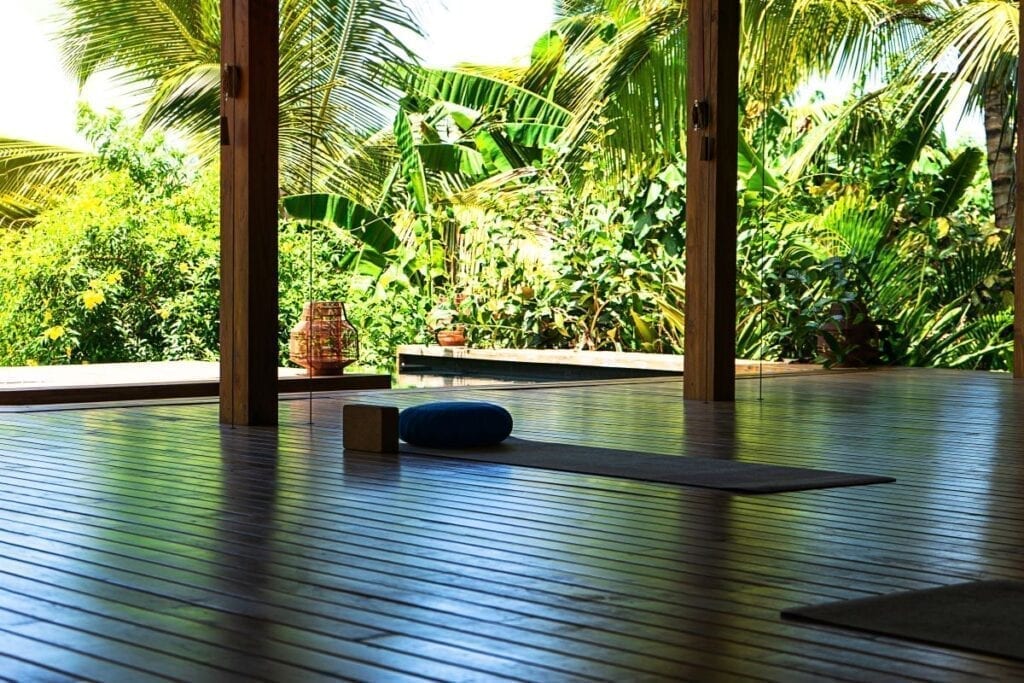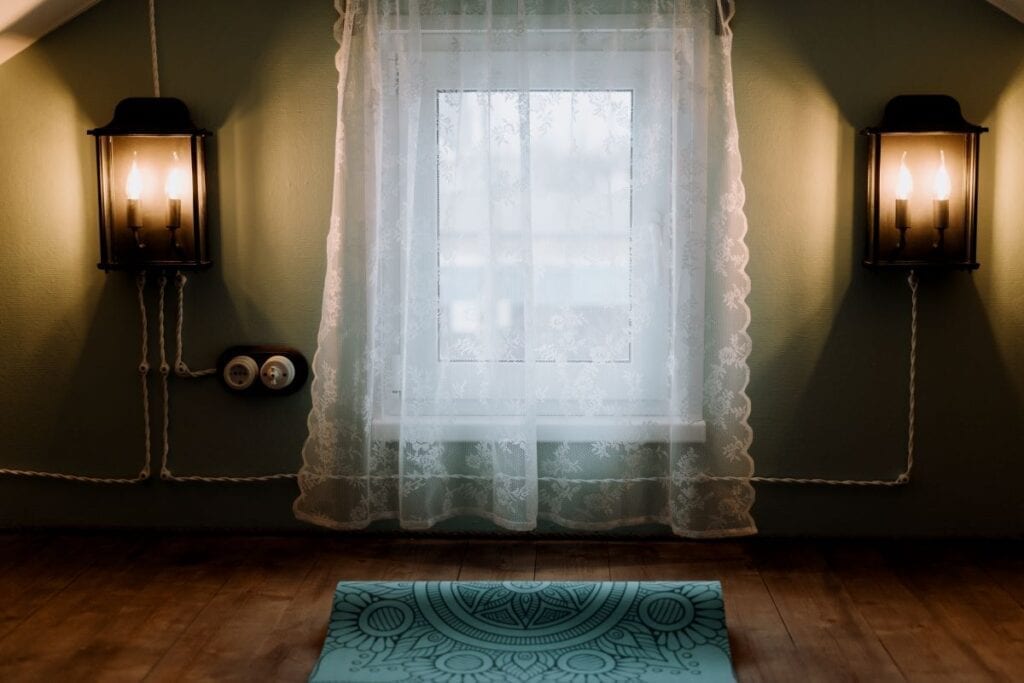10 Ways To Create Your Own Meditation Room

Can you imagine having a room in your house that heals your mind, body and soul? Wouldn’t it be amazing to have a special room inside (or outside) your home dedicated to peace, quiet, and your emotional well-being? A room that allows you to escape the daily stress of life and connect with a higher power? A meditation room will give you a place to do exactly this.
We suggest that everyone create a space in their homes for daily meditation; a space that gives you the opportunity to recharge your body both physically and mentally, and keep yourself in balance. The benefits of meditation are still being discovered, but all the discoveries to date show that meditation has a rich healing and transformational power like no other. Some studies have shown that meditation it actually has the power to change the way our brains work.
While there is no specific set of rules that need to be followed when creating a meditation room, there are a few things that you need to keep in mind. Get inspired by the following ten ways to create your own mediation room, but most importantly, follow your mind and heart, putting only the elements you love, elements that create a personal sense of zen bliss.
Tips for creating a relaxing meditation room
1. Choose a space to feel good

You should choose a room in your house that makes you feel good. This means a room that, when you walk in, makes you smile. Also, you want it to be a quiet room in the house, and definitely a room with a limited amount of traffic.
When choosing the room, pay attention to lighting as well. For example, a room that has lots of natural light will instantly improve your mood. This means that you may want to choose a room that faces the sun for the time of day you plan to meditate. Or better yet, a room that has a view of the sunset, that would be a beautiful way to start the meditation!
If you can’t find a “room” that has these qualities, consider an outdoor space. This can be your patio, your terrace or even your flower garden. You want a place that allows you to relax your mind and body, without being distracted.
2. Play meditative music

Although it is not a necessary element, music can be very relaxing for many people. This is especially beneficial for those who live in a busy area of the city, where the sounds of traffic, trains and sirens constantly come through the walls.
the meditative musicAlthough it plays softly in the background, it can help drown out all other distractions within the home, allowing you to gain a calm and peaceful state while meditating, similar to the sound of a water fountain.
When it comes time to choose the music, it is recommended to choose music without lyrics. It doesn’t necessarily have to be classical music, but any sound that you find relaxing, such as the sounds of the ocean, birdsong, or the whistling of the wind. Make sure the tracks are long enough to keep playing throughout the mediation session and consider repeating sounds to avoid interruptions.
3. Clean and tidy

Speaking of distractions, there’s nothing more distracting than a cluttered area, especially when you’re trying to relax. You want to ensure there are minimal amounts of ‘extras’ in the room.
This means that you should not try to set up a meditation room in an office. There’s too much going on in the space with a desk, papers, filing cabinets, not to mention the stressful thoughts that come with what’s in an office: work, bills, etc.
Consider stripping out the room so it contains just a few items. Some basic recommendations include a small table, a yoga mat, a rug, and a meditation pillow.
4. Aromatherapy

Another item to consider in your mediation room is aromatherapy. Using essential oils from plants, such as lavender, chamomile, and peppermint, can really soothe your soul, mind, and body.
From burning candles and incense to heating oils, you can receive the benefits of aromatherapy while you meditate. Aromatherapy not only helps you relax, it also provides other benefits. This form of therapy is gaining momentum and is well on its way to becoming a mainstream healing aid that is believed to stimulate brain function.
There has also been evidence showing that it boosts the immune system, relieves muscle pain, and reduces or eliminates stress. These are all great reasons why you should include aromatherapy in your meditation room.
5. A serene paint palette

In addition to physical elements and sensory objects, you should also consider the color of the room. You want to paint the room to match the mood you are trying to achieve.
Some may say that pastel shades are a much better choice than bright or dark shades, thinking that pastels are more calming and relaxing. Although, others may argue this point and prefer a very dark paint palette, thinking that dark colors would make the room feel like a womb and envelop them in relaxation.
Regardless of the color you choose, the color of the room affects your mood, so choose one that meets your meditation needs and makes you feel calm and relaxed.
6. Bring nature into your meditation room

Nature is organically soothing and healing, so it makes sense to bring something natural elements to the room where you want to relax and meditate. In fact, most believe that mediation is about connecting yourself (mind and body) with nature and your environment. Although it would be ideal for meditate outside in a natural and calm environment, it is not always possible if you live in a busy urban environment.
Consider adding touches of nature to your meditation room – it will be instantly infused with harmony and balance. You can choose the natural elements you prefer. This could be a plant (consider the scent of jasmine), a vase of cut flowers, jars filled with sand and seashells, or even a small water feature.
In fact, a water fountain is a must for every mediation room. If you can’t meditate on the beach while the sounds of the ocean’s changing tides fill your ears, at least a small indoor waterfall will offer similar soothing sounds (and drown out the sounds of the bustling city outside your doors).
7. Add a personal touch

When creating your mediation room, you’ll definitely want to include some of your own personal touches. It can be any element, smell, sound or object that especially soothes your body and relaxes your mind.
Think of items, such as bells, chimes, crystals, affirmation stones, beads, and artwork. Any of these are great items to create a serene and peaceful environment for you to focus solely on meditation.
Remember, though, that you don’t want to clutter the space. It is important that a clean and clear environment keeps your mind open. Pick just a few pieces at a time and swap them out for different ones from time to time if you can’t decide.
8. Fresh air is important

In addition to the aromatherapy scents you have in the room, you also need to make sure you have fresh air. Fresh air has many benefits, including increasing brainpower, improving overall health, and helping you feel refreshed.
If your space is outdoors, this will not be difficult to achieve. However, if you’re indoors, you’ll want to make sure the room is well ventilated and has a chance to experience a cool breeze from time to time.
If you’re in a room that doesn’t have windows or ceiling fans, consider bringing a pedestal fan that doubles as an air purifier. Choose one that has ‘silent’ technology, so it doesn’t interfere with your serene sounds.
9. Lighting makes a difference

As mentioned above, the best case scenario is that you find a room that has plenty of natural light. However, to make the room feel cozy, you’ll want some type of window treatment. It is recommended to choose a sheer fabric in a light shade that diffuses the light.
If the room you choose lacks natural light, you’ll really want to focus on the lamps you choose. Depending on your personal preference, you may want dim lights or bright lights. Make sure you have the ability to have both, because your mood can change from day to day.
If you have chosen an outdoor space, make sure the area is not overly lit by sunlight for the time you want to mediate. If possible, try to create shade with an umbrella or a structure that allows you to hang sheer curtains. This will prevent the sun from irritating your eyes and keeping your mind too sharp.
10. Technology is not allowed

Although there are no specific rules for creating a meditation room, we would like to make a strict rule: no electronic devices, apart from your music player. This means that no phones are allowed. From the distracting ‘ping’ of texts, emails, and phone calls, just say no to the phones in the meditation room.
You want to be able to ‘get away from it all’ when you’re meditating, and a phone won’t let that happen.
In addition to not using phones, it’s also best to avoid other electronic devices, such as video game players and televisions. Although you enjoy relaxing in front of the television, this is not the kind of relaxation you are trying to achieve during mediation.
The bottom line
There are many elements to consider when creating a mediation room. Pick a quiet spot to avoid noisy distractions, and bring in elements of nature, creating a good base to start with.
Take what you’ve learned here and start looking around your house. You may be surprised which room gives you the feeling of relaxation that you are looking for and deserve. Calm your mind, erasing all worldly problems, and open your body (and your home) to the healing powers of meditation.




